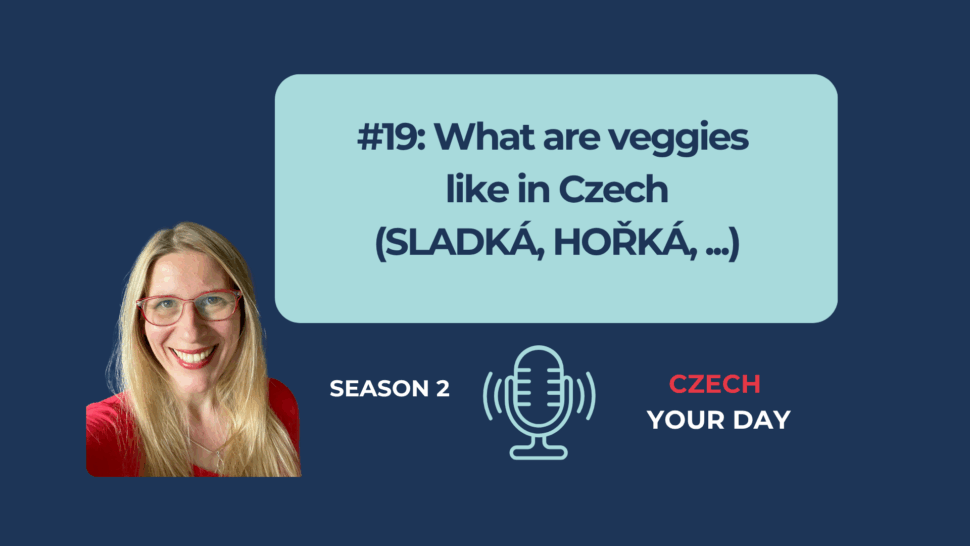What are vegetables like in Czech?/Jaká je zelenina? (S02/E19 – daily podcast CZECH YOUR DAY)

THIS WEEK’S TOPIC: ZELENINA/VEGETABLES
THE TRANSCRIPT/HANDOUT IS DOWN BELOW
Essential Czech Vegetable Qualities and Their Meanings
We’ll explore the adjectives that describe these essential qualities:
- Sladká (Sweet)
- Kyselá (Sour)
- Slaná (Salty)
- Hořká (Bitter)
- Zralá (Ripe)
- Nezralá (Unripe)
- Velká (Big)
- Malá (Small)
- Levná (Cheap)
- Drahá (Expensive)
Example Sentences
Here are some example sentences with their English translations to help solidify your understanding:
- Jaká JE zelenina? Zelenina JE sladká. (What ARE the veggies like? The vegetables ARE sweet.)
- Zelenina je kyselá.
- Zelenina je slaná.
- Zelenina je hořká.
- Zelenina je zralá.
- Zelenina je nezralá.
- Zelenina je velká.
- Zelenina je malá.
- Zelenina je levná.
- Zelenina je drahá.
Deep Dive into Examples with Common Vegetables
I have created sentences with veggies from Monday’s episode:
- Jaká zelenina je sladká? (What vegetable is sweet?)
- Sladká je kukuřice a červená paprika. (Sweet is corn and red pepper.)
- Sladké jsou batáty, to znamená sladké brambory. (Sweet is sweet potatoes, which means sweet potatoes in Czech.)
- Je mrkev a dýně. (It is carrot and pumpkin.)
- Sladká je červená řepa. (Sweet is beetroot.)
- Jaká zelenina je kyselá? (What vegetable is sour?)
- Kyselé je kysané zelí. (Sour is sauerkraut.)
- Jaká zelenina je hořká? (What vegetable is bitter?)
- Hořká je kapusta. (Bitter is cabbage.)
- Hořká je rukola, hořký je lilek, někdy je hořká okurka. (Bitter is arugula, bitter is eggplant, sometimes cucumber is bitter.)
- Jaká zelenina je velká? (What vegetable is big?)
- Velký je květák, velká je brokolice. (Cauliflower is big; broccoli is big.)
- Velké je bílé a červené zelí. (White and red cabbage are big.)
- Jaká zelenina je levná? (What vegetable is cheap?)
- Levná je mrkev. (Cheap is carrot.)
- Levné je zelí. (Cheap is cabbage.)
- V létě jsou levné cukety. (In summer, zucchinis are cheap.)
- Jaká zelenina je drahá? (What vegetable is expensive?)
- V zimě jsou drahé okurky, rajčata a papriky. (In winter, cucumbers, tomatoes, and peppers are expensive.)
As you practice these expressions, focus on details like the endings of adjectives, which change based on the gender and plurality of the noun, such as:
- VELKÝ KVĚTÁK (big cauliflower), used when masculine singular
- VELKÁ DÝNĚ (big pumpkin), used when feminine singular
- KYSELÉ ZELÍ (sour cabbage), used when neutral singular
Check the plural:
- VELKÉ KVĚTÁKY (big cauliflowers) – masculine plural
- ČERVENÉ PAPRIKY (red peppers) – feminine plural
- SLADKÁ RAJČATA (sweet tomatoes) – to rajče x ta rajčata – neutral plural
Komentáře








